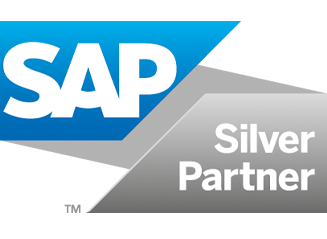Vietnam VAT rate and VAT fraud
In Vietnam, VAT rate is below the OECD average. However, VAT as a percentage of total tax revenue is 40% which is very high compared to the OECD average of 20%. This means VAT has an important role in closing the budget deficit and keeping the economy afloat. However, collected VAT revenues remain remarkably lower than the amount that would be collected due to the VAT fraud. As a solution, Vietnam government introduced electronic invoice in Vietnam in 2020. The government plans to mandate e-Invoicing in Vietnam with continuous transaction controls as of July 2022.
What is electronic invoicing in Vietnam?
In 2018, Vietnam’s Ministry of Finance announced the implementation of mandatory e-Invoicing. Furthermore, a circular providing detailed instructions on electronic invoice format, issuance, reporting and storage was released in 2019. The mandation date was November 1, 2020. However this decision was annulled in October by a new e-Invoice law which modified the date to July 2022. Currently there is a grace period in which businesses are allowed to use paper invoices. However, most of the vietnamese companies have already started exchanging invoices electronically because of the government incentives.
Who is obliged for e-Invoicing in Vietnam ?
The individuals and businesses selling goods and providing services are expected to issue invoices to the buyer using the standard data format and digitally report all transactions to the Vietnam tax authority irrespective of transaction value.
How can you issue electronic invoices?
Currently, if opted for e-Invoicing, companies with ERP systems are required to extract and transmit invoice data in XML format to the T-VAN (value-added-network) providers which are local state-financed companies appointed by the government for invoice check and controls. T-VANs act as an intermediary between taxpayers: They approve and create the final e-Invoice before being transmitted to the buyer.
What is the e-Invoice format in Vietnam?
Taxpayers in Vietnam must issue the e-Invoice to buyers in a standard format. All necessary information must be included in the e-Invoice regardless of the transaction value.
Principal contents that must be included in e-Invoices are similar to paper invoices. There exists detailed requirements regarding the name, symbol, code and number of the invoice. Issuance date of e-Invoices is the date on which the digital or electronic signature is added by the seller and must be in “ngày, tháng, năm” format. The text on an electronic invoice must be in Vietnamese. A foreign language could be added additionally if necessary. XML Schema is identified as the official data format of e-Invoices and consists of two components: e-Invoice data and e-Signature data. Electronic signature of the seller is mandatory while the buyer’s signature is optional.
What is expected for Vietnam e-Invoicing?
The new regulation shows that the government focuses on reducing administrative costs and reforming tax systems. Government estimates that companies can save VND 1 trillion (US$44 million) if 2.5 billion e-Invoices are used per year. Definitely there will be regulatory challenges for businesses: They must fully accommodate to the new changes in order to grasp the benefits and avoid the fines. Enterprises are highly encouraged to use an e-Invoicing software that is technically capable and regularly updated in order to stay compliant and avoid fines.
How can SNI SAP Vietnam e-Invoice solution help you?
- SNI SAP Vietnam e-Invoice is an SAP solution enabling electronic invoice exchange including structured data in public and private sectors.
- SNI e-Invoice solution is developed to create invoices in electronic format automatically with data extracted from SAP.
- SNI provides an end-to-end solution which comprises data mapping and processing, and transmission of e-Invoices to T-VAN providers.
SNI’s solution provides complete support for both outbound and inbound invoices. Outbound invoices are transmitted to the tax authorities through official APIs or web services. Similarly, for inbound invoices (issued by suppliers to clients), solution automatically retrieves data at regular intervals using the appropriate APIs or web services provided by the tax authorities.
All inbound invoices are displayed on SNI’s Inbound Cockpit, a dedicated interface designed to enhance the user experience and allow efficient management. Each invoice is available in both XML and (human-readable) HTML/PDF formats, ensuring detailed insight and compliance with regulatory requirements.
SNI’s invoice reconciliation feature offers seamless validation of incoming invoices by automatically matching them with purchase orders, delivery notes, or other internal records. This feature simplifies the validation of incoming invoices, reduces manual effort, and minimizes errors thus offering a quick resolution. With enhanced accuracy and efficiency, businesses can gain better control over their financial workflows and ensure smooth operations.
SNI solution integrates with clients’ systems without the need for updates to existing system versions and is independent of SAP versions. SNI’s SAP solution is compatible with SAP ECC 4.7 and above, as well as SAP Business Technology Platform (BTP), SAP R3 and SAP S/4HANA. In addition, SNI provides ERP-independent solutions designed to integrate with any ERP system clients may use.
Inbound Benefits:
- There is no OCR needed
- Output data is accessible
- Inbound posting is possible
- No need to keep paper invoices.
Outbound Benefits:
- No SAP Script Development and SAP Smartform Development needed for printing or sending the output
- No Idoc, EDI or similar development for integration
- Data can be sent via web-service, or file-based technologies like email, Ftp, sFtp…
- Output data is accessible as XML or PDF at any time.


